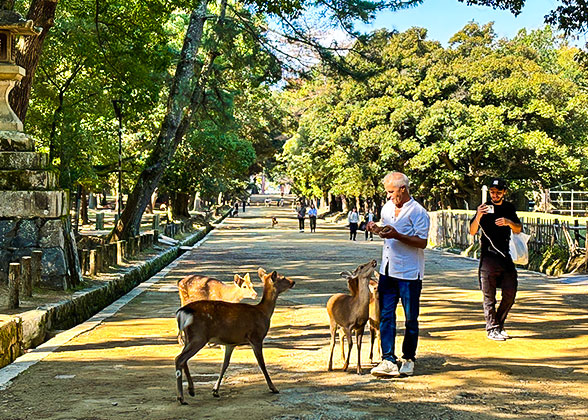Nagasaki Attractions
Located along the westernmost coast of Japan, Nagasaki is one of the oldest sea ports in Japan and once the only port open for international trade in the country, so preserving many exotic cultural heritages. It is the second city in the world suffering an atomic bomb after Hiroshima. Till today, you can see many relics from the fatal disaster. The attractions here are mainly distributed to the north and south sides of Nagasaki Railway Station. It’s recommended to spend 1-2 days visiting Nagasaki.Top Places to Go in Northern Nagasaki
1. Nagasaki Peace Park
Nagasaki Peace Park was built to commemorate the atomic bomb explosion on August 9, 1945. There are many statues inside, reminding us of the terror of war and expressing a desire for peace.2. Nagasaki Atomic Bomb Museum
|
|
|
3. Hypocenter Park
Here, visitors can see the strata exposed from the atomic bomb, which are scattered with tiles, glass melted by heat, teacups, wires, etc. The park is also home to a number of monuments, and memorial statues.Best Attractions in Southern Nagasaki
1. Glover Garden
Glover Garden is an open air museum on the hillslope that preserves the residences of Western merchants. It has many worth-viewing highlights, including 9 western style villas and flowers in full bloom throughout the year. Among these buildings, the Old Goraba Residence where Thomas Blake Goraba, a Scottish merchant, once lived, is the oldest wooden villa in Japan.2. Oura Church
Completed in 1864, Oura Church is dedicated to 26 Japanese martyrs who died in 1597. It is a Gothic Church combining Japanese and Western styles and built with red bricks and painted white with plaster powder.3. Megane Bridge
Megane Bridge built in 1634 is one of the oldest stone bridges in Japan. Its name, literally meaning Spectacles Bridge, comes from the fact that it resembles a pair of spectacles when its two arches reflected in the river water. It is 22 meters (72 feet) long and 3.65 meters (11 feet) wide, once shot in Detective Conan.4. Nagasaki Confucius Shrine
Nagasaki Confucius Shrine, a Chinese style shrine, was built in 1893 by the Chinese residents in Japan with the support of the Qing government of China. This shrine enshrines the statue of Chinese philosopher Confucius and the stone statues of 72 sages who are Confucius’ disciples. Here, visitors can also participate in traditional performances such as "Henmen" and "Jaodori".5. Nagasaki Shinchi Chinatown
Nagasaki Shinchi Chinatown is the oldest Chinatown in Japan. There are various shops and restaurants where visitors can eat Nagasaki’s famous, Chinese-influenced dishes and buy some Chinese crafts and ornaments. The Nagasaki Lantern Festival is famous, which lasts 15 days between late January and early March when 15,000 lanterns and lights illuminate the street.6. Dutch Slope
Dutch Slope is a stone-paved ramp. In the mid to late 19th century, this was the preferred settlement for foreigners. So it preserves many former residences of foreign traders, among which the Higashi Yamate 13 is allowed to visit.7. Dejima
Dejima-machi in Nagasaki






